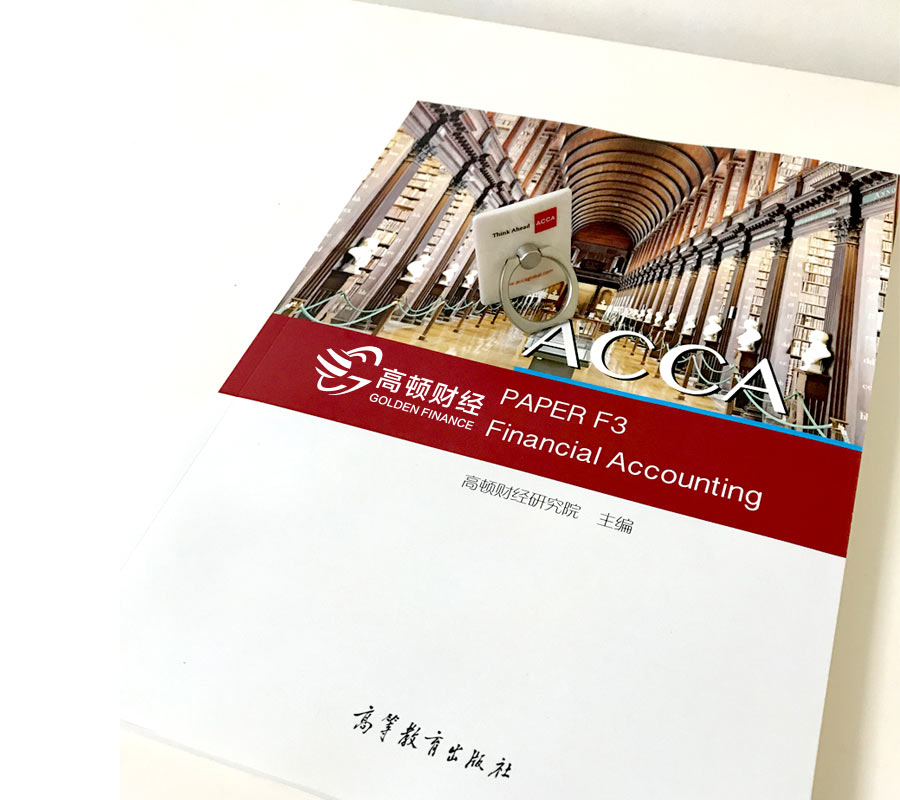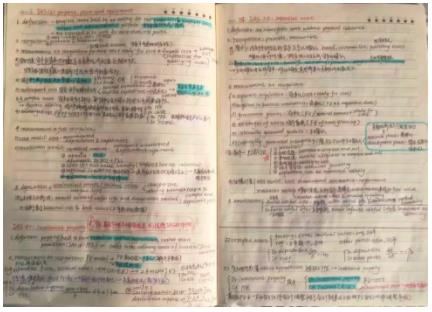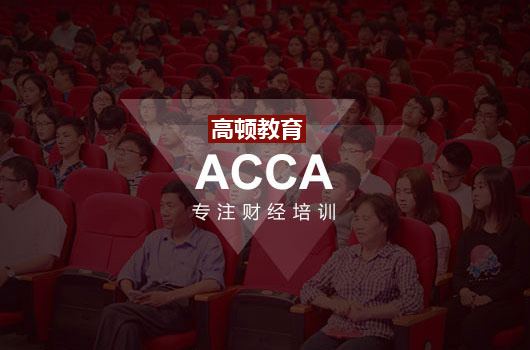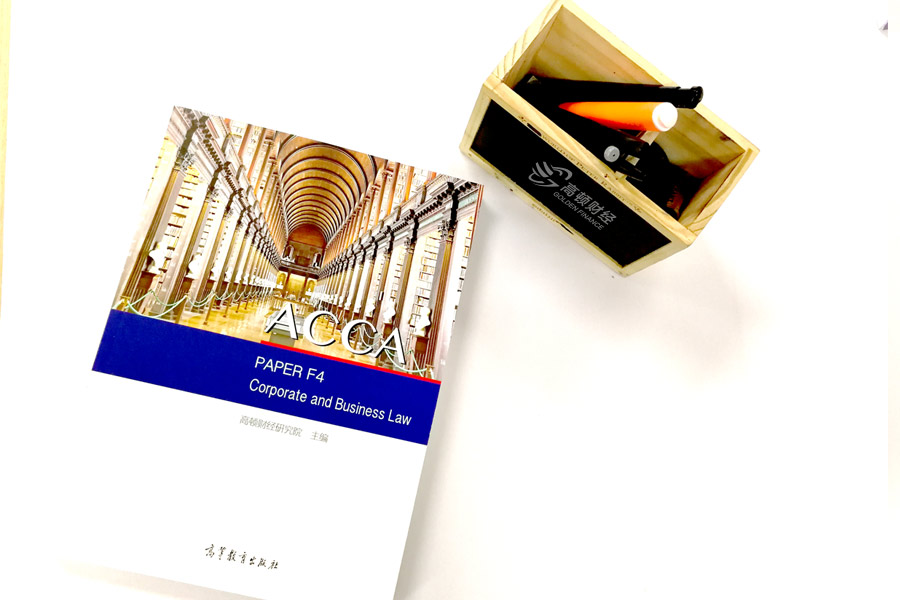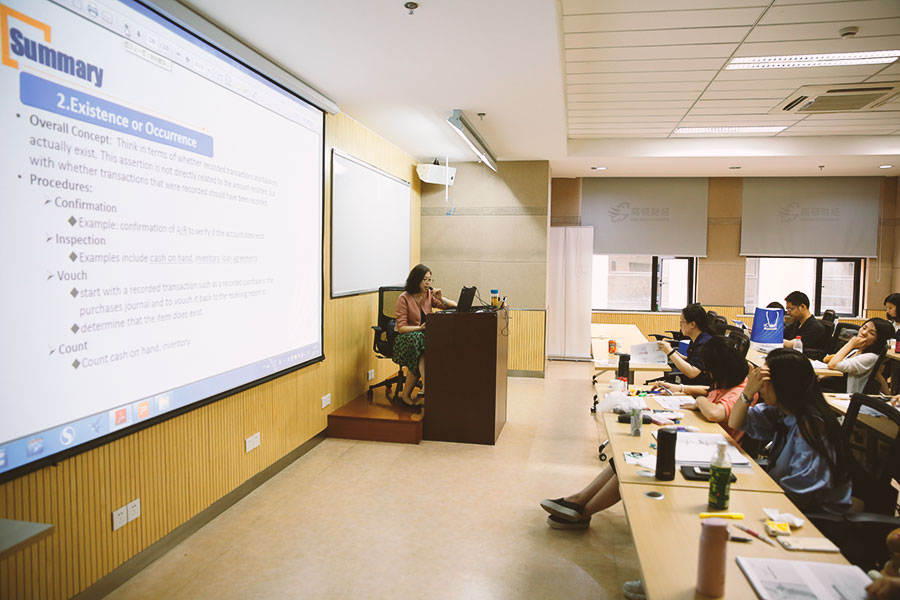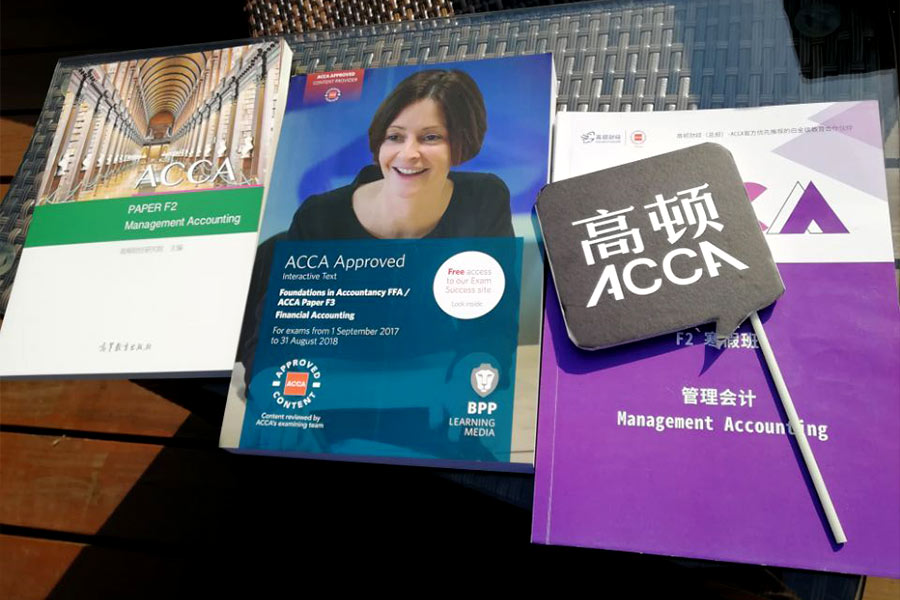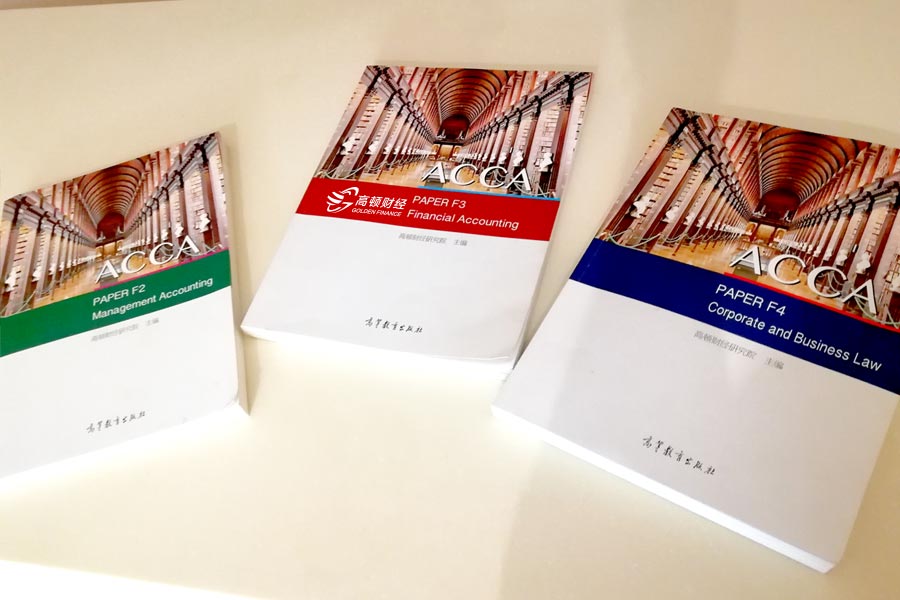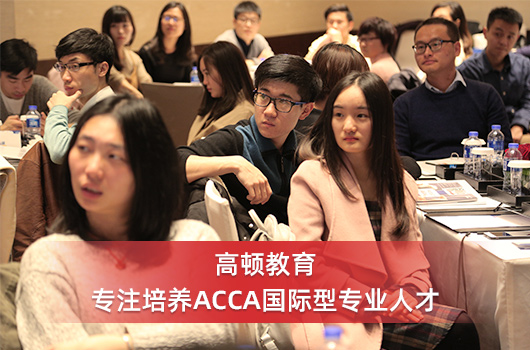ACCA考试科目F6《税务》常用公式,想拿高分就收藏,学霸早已倒背如流!

ACCA考试科目F6《税务》常用公式,想拿高分就收藏,学霸早已倒背如流!ACCA资料,戳:ACCA考前押题+内部讲义【考前必刷】(限时免费领取)
1. Adjusted net income=net income- gross PPS - gross gift aid donation
2. Personal allowance
Std PA=£11,000
When 'Adjusted net income'≥£100,000
Std PA 11000
Less: restriction(adjusted net income - 100000)*1/2
Adjusted PA
'Adjusted net income'≥£122000,PA=0
3. Gift aid donation
• Gross up=net gift aid donation *100/80
• Extending the rate band
32000(150000)+ gross gift aid donation
• Adjusted net income=net income -gross gift aid donation
4. Child benefit income tax charge:
When £ 60,000≥ 'Adjusted net income'≥£50,000
%=(Adjusted net income -50000)/100 Round down
child benefit income tax charge=%* child benefit received
5. Authorized mileage allowances
Up to 10,000 miles 45p
over 10,000 miles 25p
6. Additional charge of living accommodation benefit
Additional benefit=(cost of providing accommodation – £75,000) × the official rate of interest
which is time apportionment
7. Benefit of use of assets
The benefit assessed is the higher of
- 20% x (MV when first provided –the price paid by employee)
- rental paid by employer (if asset is rented)
which is time apportionment
8. Benefit of gift of assets
If new asset is given : cost of the asset
If used assets is given : higher of
- (MV when given –the price paid by employee)
- (MV when first provided –benefits already assessed –the price paid by employee)
9. Benefit of provision of a car
Taxable car benefit= X%*(list price – capital contribution) * time proportion – payment by employee for use of the car
Emission ≤50 g/km,X=7%
51≤ Emission ≤75 g/km, X=11%
76≤ Emission ≤94g/km, X=15%
Emission =95g/km, X=16%
Emission >95g/km, increase by 1% for every 5 g/km increase
X=(Emission-95)/5 Round down
diesel cars :+ 3%
Maximum:37%
10. Benefit of Provision of fuel
X%* £22,200 which is timeapportionment
11. Provision of vans
Standard benefit of £3,170
£598 a year for private fuelwhich is time apportionment
12.PPS
Grossup=net PPS *100/80
Extending the rate band
32000(150000)+gross PPS
Adjusted net income=Netincome- gross PPS
13.OPS
Employer’scontributions: trading profit - OPS
Employee’scontributions: employment income- OPS
14.Furniture replacement relief
Furniturereplacement relief=MV of new furniture(same function)-resale value of oldfurniture
15.Rent a room
Gross rental income<= £7500, lower of
-Property business income=0
-Property business income= normal calculation= gross rent – expenses – Furniture replacement relief
Gross rental income> £7500, lower of
-Property business income= normal calculation or,
-Property business income= alternative calculation= gross rent -7500
16.Premium
Landlord:
Premium is treated asproperty business income for the year of grant.
P-P× 2% (n-1)
Where:P = total premium
n= duration of lease in years
Tenant: premium paid is treated as a tradingexpense(proportioned to month)
P-P × 2% (n-1) * m
n 12
17.Class 1 NIC (on cashearnings)
Primary:
£1-£8,060per year Nil
£8,061-£43,000per year 12%
£43,001 and above per year 2%
Secondary:
£1-£8,112per year Nil
£8,113and above per year 13.8%
18.Class 1A NIC (on taxablebenefits)
=taxablebenefits*13.8%
19.Class 2
=£2.8*weeks
20.Class 4(on trading profit:which is after loss relief)
£1-£8,060per year Nil
£8,061-£43,000per year 9%
£43,001 and above per year 2%
21.Payment of tax
for 16/17 :
- 31.1.17 - first payment onaccount=1/2*(15/16 income tax payable+15/16 NIC Class 4)
- 31.7.17 - second payment onaccount=1/2*(15/16 income tax payable+15/16 NIC Class 4)
- 31.1.18 - final balancing payment= 16/17 income tax payable+16/17 NIC Class 4 tax -(15/16income tax payable+15/16 NIC Class 4) +16/17CGT +16/17 Class 2
Payment ofcapital gain tax : 31.1.18for 16/17
Payment ofClass 2: 31.1.18for 16/17
22. Interest on late payment of tax: 3% * due amount(which is time apportionment)
POAs- runs from 31.1.2017/31.7.2017
Final payment-runs from 31.1.2018
23. Penaltyon late balancing payment:
- no more than 1 month,0
- no more than 6 month, 5%, (5% * (shouldpay - actual pay))
- more than 6 months, 10
- more than 12 months,15%
24.Penaltiesfor late return:
- thereturn filed after the filing date, 100
- morethan 3 months, 10 per day, at most 90 days
- morethan 6 months, higher of 5%*tax due on return & 300
- morethan 12 months,higher of 100%/70%/5%*tax due on return & 300
CGT
1. Transfers between spouses/civil partner (A→B)
A:
less: cost
deemed proceeds:
less: rollover relief
Gain taxed now(0)
B:
base cost=deemed proceeds-rollover relief
2. Partial disposal
Proceeds A
Less: selling costs (X)
X
Less:
original cost* A /(A+B) (C)
Chargable gain X
A – MV of the part disposed of
B – MV of the remaining part of the asset
3. Damaged asset
A
A + B
A= compensation received
B= unrestored value of asset
4. Destroyed assets
Compensation received
Less: cost
Less: rollover relief
Gain taxed now(not reinvest)
Base cost of the new asset= MV of the new asset - rollover relief
5. Non wasting chattels(antiques and paintings)
6. Wasting assets(copyright)
Remaining cost is the key part in the computation
For example, if a taxpayer acquires a wasting asset with a remaining life of 40 years and disposes of it after 15 years, so that 25 years of useful life remain, only 25/40 of the cost is deducted in the computation.
7. Principal private residence
PPR relief is calculated as
Gain * period of occupation/period of ownership
The letting relief is the lowest of
The gain arising in the letting period not covered by PPR relief
£40,000
The PPR relief already given
8.Valuing quoted shares
lower of:
the ‘quarter-up’ value: lower quoted price + 1/2 × (higher quoted price – lower quoted price)
the average of the highest and lowest marked bargains (ignoring bargains marked at special prices)
9. Cost of shares(matching rules)
Acquisitions on the same day
Acquisition in the next 30 days – FIFO basis
Shares in the share pool
Proforma of share pool
Share pool No. Cost
Additions X X
Disposals (X) X
X (X)
10.Takeover
Proceeds(cash received) A
Less:
original cost* A /(A+B) (C)
Chargable gain X
where:
A = cash element and;
B = value of non cash element i.e market value at date of takeover
11. Gift relief
Assets qualifying:
Business assets
Unquoted shares in a trading company
Quoted shares in a personal trading company (> 5%)
A:
Deemed proceeds:
less: cost
less: gift relief
Gain taxed now(actual gain)
B:
base cost=deemed proceeds-gift relief
If the company has chargeable non-business assets at the time of the gift
gift relief will be:
Total gain × MV of CBA / MV of CA
CBA = chargeable business assets (chargeable assets except investments)
CA = chargeable assets (assets not exempt from CGT)
12.Replacement of Business Assets
Proceeds of old asset
Less: cost
Less: rollover relief
Gain taxed now(not reinvest)
Base cost of the new asset= MV of the new asset - rollover relief
Corporation tax liability
1. Proforma
2. Computing the corporation tax liability
Corporation tax payable is calculated as:
TTP*CT rate for the financial year
4. Chargeable Gains for Companies
proceeds:
less: incidental cost on disposal
net proceeds
less: cost
capital exp.(enhancement cost)
gain
less:
indexation allowance on cost
cost*(RPI卖-RPI买)/RPI买
indexation allowance on enhancement cost
enhancement cost*(RPI卖-RPI提)/RPI提
indexed gain
5. Matching rules for shares - companies:
same day
9 days prior to disposal
FA1985 pool: from 82.4.1 to 10 days prior to disposal(IA should be considered)6.Trading losses
7. Self-assessment and payment of tax by large companies
Installments are based on expected current year’s liability.
The four quarterly installments will be made in months 7, 10,13 and 16 following the start of the accounting period. The installments are due on the 14th of the month.
If an accounting period is less than 12 months
Each installment = 3 × CT/n (n = no. of months in AP).
Final installment always due by 14th of the 4th month following end of accounting period.
Inheritance tax
1.lifetime tax
(1) CLT (donee pays tax)
donee pays tax
step1: 7 yrs accumulation of other CLTs (tranfer date转让日往前7年内)
step2: nil rate band available(nil rate band at transfer year- 7 yrs accumulation)
step3: value of CLT (after exemptions)
step4: calculate the IHT using 0%/20%
(2) CLT (donor pays tax)
donor pays tax
step1: 7 yrs accumulation of other CLTs (tranfer date转让日往前7年内)
step2: nil rate band available (nil rate band at transfer year- 7 yrs accumulation)
step3: net value of CLT (after exemptions)
step4: calculate the IHT using 0%/25%
step5: gross value of transfer (net value of transfer+ IHT paid by donor)
2. Death tax on Lifetime transfer
if the donor dies within 7 yrs of making a PET/CLT, then the PET&CLT will need to calculate an additional death tax.
step1: 7 yrs accumulation of PETs and gross value of CLTs if donor pay the lifetime tax (transfer date转让日往前7年内)
step2: nil rate band available (325000 death year nil rate band- 7 yrs accumulation)
step3: Gross value of CLT/PET
step4: calculate the IHT using 0%/40%
step5: reduce the taper relief (if available)
step6: deduct any lifetime tax already paid
6. Death tax on death estate
step1: 7 yrs accumulation of PETs and gross value of CLTs if donor pay the lifetime tax (death date往前7年内)
step2: nil rate band available(325000 death year nil rate band- 7 yrs accumulation)
step3: value of death estate
step4: calculate the IHT using 0%/40%
7. Value of death estate
Value of death estate:ALL ASSETS
except for:
mortgaged asset (endowment mortgage is not deducted)
legally enforceable debts (verbally promised is not deducted)
funeral expense
spouse exemption
Value added tax
1. VAT = VAT exclusive amount × 20%
2. VAT = VAT inclusive amount × 20/120
3. VAT inclusive amount = VAT exclusive amount × 120/100
4. Cash discount
Output VAT= sales revenue*(1-x%discount)*20%
Adjustment is made if discount subsequently does not apply.
5.VAT on fuel
the company only paid the business part:
input VAT= business fuel *20%
the company paid all fuel(business& private),however employee reimburse all the private fuel
input VAT= full amount*20%, output VAT= private fuel*20%
the company paid all fuel(business& private),and employee does reimburse all the private fuel:
input VAT= full amount*20%, output VAT=Scale charge*20%
6. Flat rate scheme
flat rate percentage * tax inclusive income(std + zero +exempt supplies).小编再送一个考试资料包,可以分享给小伙伴,自提,戳:ACCA资料【新手指南】+内部讲义+解析音频更多ACCA专业学习内容来自ACCA中国考试网和全球ACCA学习者一起成长为高端财务人
【整理版】ACCA各科目历年真题
真题高频考点,刷题全靠这份资料
acca全科学习思维导图
梳理核心考点,一图看懂全部章节
2023年acca考纲解析
覆盖科目重难点,备考按照计划走
- acca考试怎么搭配科目?
-
建议优先选择相关联的科目进行搭配报考,这样可以提高备考效率,减轻备考压力,1、F1-F4:为随时机考科目,难度较低,这里可以自行随意选择考试顺序。2、F5-F9:如果你的工作的和财务会计或者审计有关、或者你比较擅长财务和审计的话,推荐先考F7和F8。你可以选择一起考ACCA考试科目F7和F8或者先考F7(8)再考F8(7),这就要取决你一次想考几门。3、P阶段:选修科目中,建议企业首选AFM!第二部分科目进行选择,如果AA和SBR掌握学生更好,可以通过选择AAA,如果SBL掌握的好,可以自己选择APM。
- acca一共几门几年考完?
-
acca一共有15门考试科目,其中有必修科目和选修科目,考生需要考完13门科目才能拿下证书。
- acca一年考几次?
-
acca一年有4次考试,分别是3月、6月、9月和12月,分季机考科目是采取的这类四个考季的模式,而随时机考则是没有这方面的时间规定限制,可以随报随考。
- acca的含金量如何?
-
ACCA证书的含金量是比较高的,从就业、能力提升、全球认可等角度来说,都是比较有优势的证书,其含金量主要表现在以下几个方面:1、国际化,认可度高;2、岗位多,就业前景好;3、缺口大,人才激励。
-
四大、八大最新工资对比:待遇低是对内资所最大的误解! 2023-09-01
-
四大咨询:挣的比审计多,招的比税务少!问题是怎么进? 2023-04-18
-
四大会计师事务所录取男女比例1:4,因为优秀的男生都看不上四大? 2023-03-31
-
国际四大+本土八大+华普天健:面试、笔记、心得全在这里了 2023-03-31
-
四大会计师事务所最有价值的面试问题清单汇总 2023-03-29
-
财务人转型危机!财会人为什么要转型? 2022-08-29
-
德勤招聘官爆料今年春招内幕:四大偏爱哪种应届生? 2022-02-10
-
30岁了还考ACCA证书,你疯了吗? 2021-10-21
-
ACCA考试科目SBL大陆前三学姐考经,学霸小姐姐教你玩转SBL考试! 2021-08-13
-
“四大”完成薪酬调整:毕马威涨幅最高,PwC冻薪由最高人工变最低,好气! 2021-07-14
-
致所有想进安永的人:这段历史面试官会问! 2021-07-14
-
四大PK:普华永道、德勤、安永和毕马威有何不同? 2021-07-14
-
人生不设限:三本ACCA学员逆袭一年考过ACCA9门 2021-05-26
-
讲真,最适合考ACCA的五类人是哪些? 2021-05-26
-
讲真,最适合考ACCA的五类人是哪些? 2021-05-26
-
颜值爆表的ACCA学神小姐姐,全球第一 2021-05-25
-
留学党考完ACCA在国外好找工作吗? 2021-05-25
-
哪些专业可获ACCA免试?符合免考条件的,就可以有1-9门考试豁免资格?! 2021-05-24
-
ACCA和CPA哪个好?考研还是ACCA?别纠结了,来看看这个! 2021-05-24
-
四大会计师事务所校招与社招的差别巨大!ACCA对于进四大有多大帮助? 2021-05-24
-
ACCA和CPA哪个好?进四大,ACCA和CPA证书谁更吃香? 2021-05-24
-
ACCA证书对出国留学有什么优势? 2021-05-24
-
高顿2016年诚聘ACCA讲师啦! 2021-05-24
-
ACCA就业前景如何?ACCA证书的高含金量体现在这些地方 2021-04-28
-
曝光!四大学姐还原真实四大:收入、晋升、加班、出差... 2021-01-07
-
四大薪资曝光!为什么工资低,还有这么多人想进? 2021-01-07
-
安永实习是一种什么样的体验? 2021-01-07
-
四大最全对比分析:工作相同待遇却不同?!而不加班的是... 2021-01-07
-
花800个小时才拿下四大Offer,他决定把所有经验都告诉你! 2021-01-07
 更多服务
更多服务










